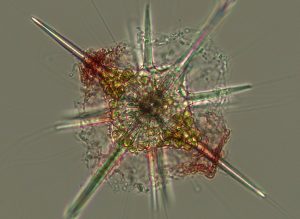
Exploration of aquatic photosymbioses at subcellular scale
The AtlaSymbio project aims to improve our understanding of aquatic photosymbioses by unveiling the three-dimensional ultrastructure of host-microalgae interactions using 3D subcellular imaging. We will generate an open-source atlas capturing the architecture and metabolic implications of different photosymbioses collected during the TREC expedition or with experts. The ambition is to foster collaborative exploration and advance the mechanistic understanding of aquatic photosymbioses.
AtlaSymbio is funded by the Gordon and Betty Moore Foundation. The project involves an interdisciplinary consortium of experts in microalgae, symbiosis and electron microscopy, from Grenoble (Decelle’s group, Cell and Plant Physiology Lab-Photosymbiosis team), EMBL Heidelberg (Schwab’s group), and Roscoff (Ian Probert, Marine Station, Roscoff culture collection).

Revealing planktonic ultrastructural diversity with Expansion Microscopy (ExM)
An international EMBL-EPFL-UNIGE team (Dey, Schwab, Saka, Dudin, Hamel, Guichard) are coupling expansion microscopy (Cryo-ExM and U-ExM) to FISH for species ID and sub-cellular imaging. We aim to create an atlas of native eukaryotic cellular biodiversity with unprecedented 3D spatial resolution, with a long-term view to assess the repercussions of climate change on free-living microplankton populations.
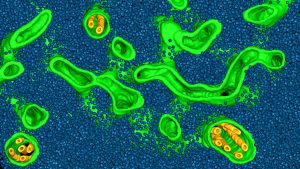
cryOcean: Molecular architecture of algal photosynthesis
The Engel group at the University of Basel uses cryo-electron tomography (cryo-ET) to visualize structures inside native cells with molecular resolution. In the cryOcean project, we aim to chart the molecular organization of photosynthetic organelles (light-harvesting thylakoid membranes and carbon-fixing pyrenoids) in diverse marine algae species sampled directly from the ocean.
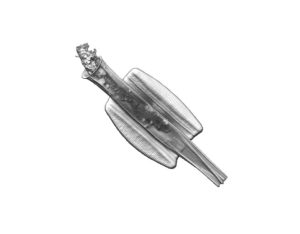
A cell-cell atlas of diatom symbioses across Europe
This project is dedicated to understanding the diversity, distribution and impact of intimate interactions involving diatoms, major primary producers in the ocean. By using a combination of single-cell live and subcellular imaging, high-throughput phenotyping approaches, and in situ chemotactic assays, the Vincent lab at EMBL, asks how microbial interactions can affect diatom behaviour, development and survival in a changing ocean.
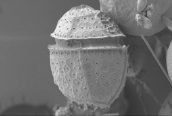
NAVARRO – Enabling environmental structural cell biology
NAVARRO aims to capture dynamic cellular processes in diverse marine environments – bridging structural biology with environmental studies. With advanced cryo-EM sample preparation instruments now available directly at the marine sampling sites, The Schwab Lab at EMBLwe have begun investigating molecular machines in situ, within their natural context.
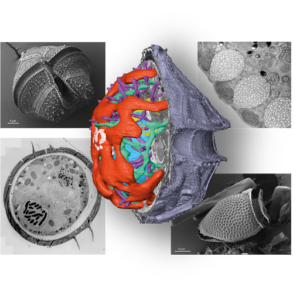
STARDUST – Ultrastructural biodiversity of dinoflagellates
The Schwab Lab at EMBL employs high-resolution correlative electron microscopy to reveal the complex cellular architecture of marine dinoflagellates from natural environments. We are constructing a geo-centric ultrastructural atlas of dinoflagellates using high-resolution 2D EM, high-throughput X-ray tomography, and volume EM methods.
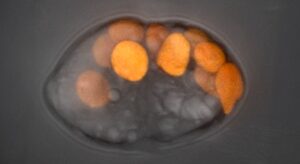
Endosymbiosis and plastid-stealing microorganisms
The Hehenberger Group (Biology Centre, CZ) investigates the processes during plastid endosymbiosis using microorganisms that steal and transiently retain plastids from their prey. We aim to analyze the physiological and genetic integration of the plastids in such lineages by combining cultivation-dependent and -independent approaches with the support of the AML. The project is part of the ERC CoG-funded project KLEPTOS.
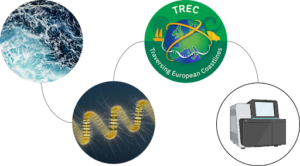
Ecological importance of chain formation in diatoms
Diatoms from genus Chaetoceros are known to form chains that can go up to 50 cells. Because of technical limitations, our knowledge of why those chains are formed is limited. Thanks to in situ single-cell sampling made during the TREC expedition and single-cell RNA sequencing, this project in the Vincent lab at EMBL, aims to explore the impact of environmental conditions on chain formation and length, and decipher the ecological importance of chains.
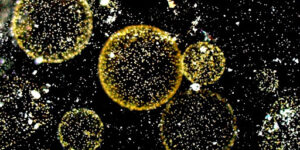
The social life of the microalga Phaeocystis: unveiling the microbiome across life stages and geography
The main goal of the project, led by Decelle group at CNRS/UGA/CEA, is to better understand the life history of the marine microalga Phaeocystis, which is a keystone phytoplankton taxon in the ocean. In coastal waters, blooms of colonies can have negative impacts in the ecosystems with consequences on the fisheries and touristic activities. The ability to live in symbiosis intracellularly in a host cell is also an intriguing phenomenon in Phaeocystis. By unveiling the diversity of the microbiome across these different life stages and along the European coast, we hope to bring new information to better understand the ecological success of this microalga. The microbiome will be assessed by different sequencing strategies thanks to the samples collected during the TREC expedition. This project forms part of the BIOcean5D EU funded project.

Image-enabled cell sorting of plankton
Plankton drives marine ecosystem function, but phenotyping cells in their environment remains challenging. Manual sorting of morphologically diverse samples creates discovery bottlenecks. This TREC project, uniting EMBL, Roscoff Biological Station, and Ifremer Brest, advances image-enabled cell sorting across all planktonic size fractions. By integrating computer vision, photolabelling, and high-throughput single-cell sorting/sequencing, it aims to accelerate marine research capabilities.
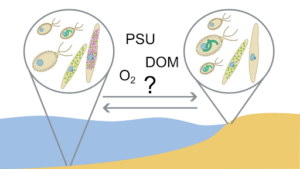
Habitat expansion in benthic endosymbioses
This project will analyse the TREC dataset to investigate species diversity and geographic distribution of two unique protist endosymbioses: Paulinella, the genus within which an independent photosynthetic organelle evolved, and Pseudoblepharisma, the genus within which the only known ‘green and purple’ endosymbiosis evolved. The team (Sørensen, Muñoz-Gómez, Nowack & Burki) will use this data to study the effect of environmental gradients on the endosymbiotic state of these protists. Ultimately, our goal is to explore how endosymbiosis-mediated metabolic innovation can enable habitat expansion.










